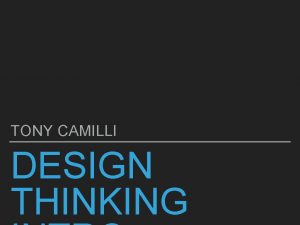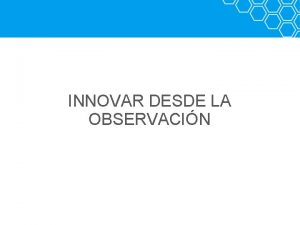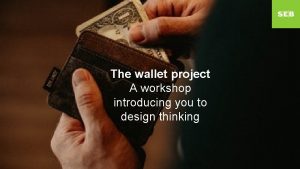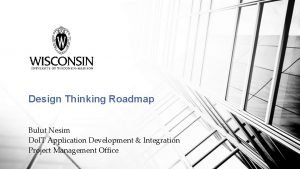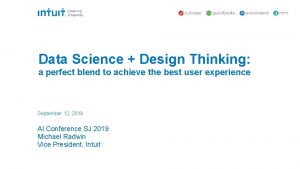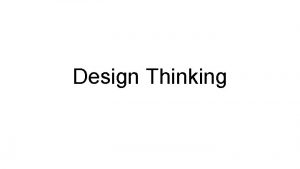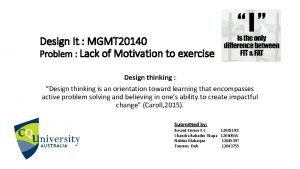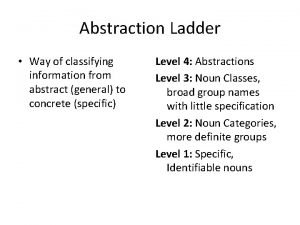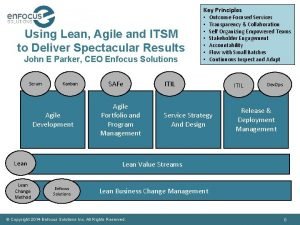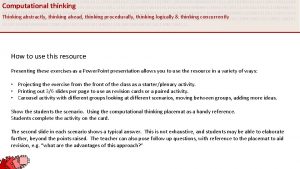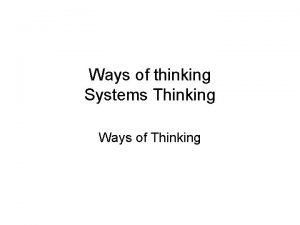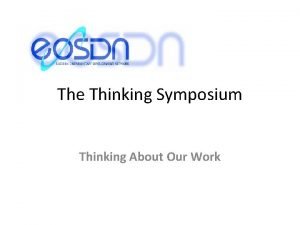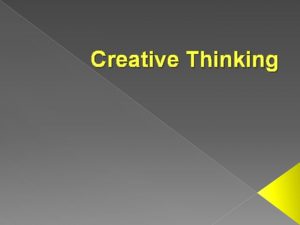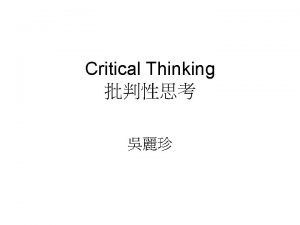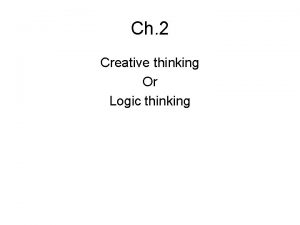Design Thinking What is design thinking Design Thinking















- Slides: 15

Design Thinking

What is design thinking? • Design Thinking is a methodology used by designers to solve complex problems, and find desirable solutions • Now, it has been used as a process for creative problem-solving and innovation platform outside of professional design practice, such as in business and social contexts


Stanford d. School Design Thinking Process EMPATHIZE IDEATE DEFINE PROTOYPE TEST

Empathy is the foundation of a human centered design process EMPATHIZE • • • Observe - shadowing Engage- interviewing Immerse –role playing Seek to understand Non-judgmental

“A problem well-stated is half-solved. ” -- Charles Kettering, the famed inventor and head of research for GM How Might We ACTION WHAT for WHOM in order to CHANGE SOMETHING DEFINE

Push past obvious solutions to get to breakthrough ideas IDEATE

Make it Tangible PROTOYPE

Test and make the ideas better TEST

Proximity Designs - Proximity Designs is an award-winning, social enterprise based in Yangon, Myanmar. They design and deliver affordable, income-boosting products and services that complement the entrepreneurial spirit of rural families. Great example of design thinking at work!




Mini Design Thinking Workshop • Your mission: Redesign your friend’s Morning Routine • Break into teams • Identify 1 of the team member to share his/her morning routine (2 min) • Interview (template 1) -4 min • Define the question (template 3&4) – 4 min • Ideate solutions and get feedback (template 5&6) – 5 min • Report back (2 min per team) • Summarize your friend’s morning routine; state your point of view; 1 or 2 solutions that you recommended and his/her feedback

Reading the news today does not exactly leave you feeling optimistic. Hurricanes in the Americas. Horrific mass shootings. Global tensions over nuclear arms, crisis in Myanmar, bloody civil wars in Syria and Yemen. Your heart breaks for every person who is touched by these tragedies. Even for those of us lucky enough not to be directly affected, it may feel like the world is falling apart. But these events—as awful as they are—have happened in the context of a bigger, positive trend. On the whole, the world is getting better. I’m not trying to downplay the work that remains. Being an optimist doesn’t mean you ignore tragedy and injustice. It means you’re inspired to look for people making progress on those fronts, and to help spread that progress more widely. - Bill Gates “What gives me hope about the world’s future”
 Positive thinking vs negative thinking examples
Positive thinking vs negative thinking examples Thinking about your own thinking
Thinking about your own thinking Dichotomistic
Dichotomistic Perbedaan critical thinking dan creative thinking
Perbedaan critical thinking dan creative thinking Thinking about you thinking about me
Thinking about you thinking about me Focus flare design thinking
Focus flare design thinking Testear design thinking
Testear design thinking Stanford design thinking process
Stanford design thinking process Wallet project design thinking
Wallet project design thinking Design thinking roadmap
Design thinking roadmap Overdraft
Overdraft Design thinking
Design thinking Design thinking feedback capture grid
Design thinking feedback capture grid Abstraction laddering design thinking
Abstraction laddering design thinking Malla receptora
Malla receptora Lean itsm
Lean itsm





